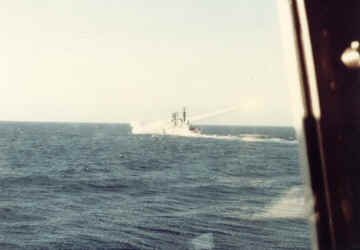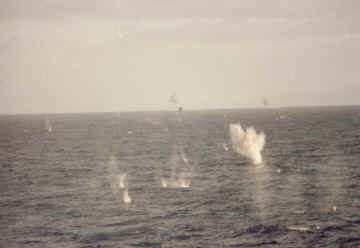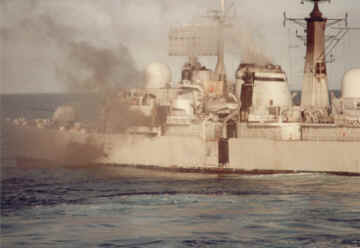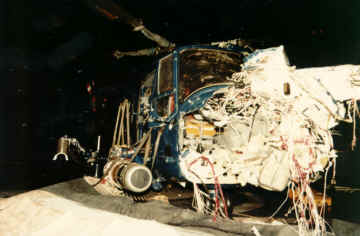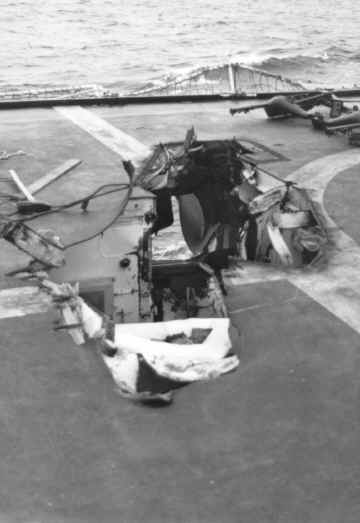They were flying extremely
low and close together and our Sea Wolf tracker was unable to form a clear track for the
missile to engage so we were unable to fire. "Take Cover", came the cry.
Everyone dived for the deck, except the gun crews who kept on firing for all they were
worth, and hearts in mouths we awaited our fate. Seconds seemed like hours and then there
was a loud CLANG from aft.
Nobody moved and the explosion was awaited.
The seconds passed and still nothing happened. We were still alive and afloat! However the
raid was not over because the other two aircraft were attacking from ahead. This time Sea
Wolf had locked on to the aircraft. They were still outside range so we waited for the
right moment to fire. Then without explanation COVENTRY moved across our bows, probably to
open her weapon arcs, preventing us from firing. The Skyhawks dropped their bombs and at
least one and maybe two hit COVENTRY midships. Five seconds later there was an almighty
explosion and she took on a severe list. It was apparent that she was capsizing and the
ship's company were already abandoning ship.
We had also been hit by a bomb which fortunately entered the
starboard side of the ship and bounced out via the flight deck, demolishing the Lynx
enroute, but passing through without exploding. Realising we were safe for the time
being, we set about the task of recovering the COVENTRY survivors and prayed that
no more aircraft would attack us while we were attempting this rescue. Harriers provide us
with a protective umbrella as we fought to get everyone onboard by nightfall. Men were
leaping into liferafts and others were just jumping into the icy water, so it was
imperative that the survivors were rescued as quickly as possible. Fortunately we had an
already developed, but as yet untested, survivor handling plan which swung into action.
All available boats were lowered and helicopters streamed out from San Carlos to assist.
Men suffering from the effects of the blast were brought onboard and everyone was
examined, given medical treatment if required, reclothed, fed and the more seriously
injured were flown straight to the hospital ship, UGANDA. The helicopters proved to be
invaluable. Time and again aircrewmen were winched down to pluck men from the icy sea and
at one stage a Wessex landed on the hull of the strickened COVENTRY to pick up survivors.
One extremely brave piece of flying occurred when one pilot hovered above the Sea Dart
magazine, and his winchman recovered 17 men from a group of life rafts which were trapped
alongside the ship's hull. At any moment the magazine could have exploded. With all the
survivors rescued we returned to San Carlos where they were put into a landing craft and
transferred to the CANBERRA.
